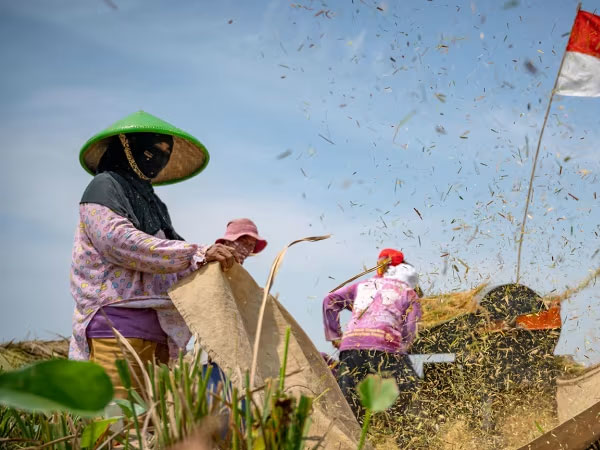 Indonesia is the third-largest producer of rice in the world but isn’t self-sufficient, having to import the grain every year to make up for the shortfall.
Indonesia is the third-largest producer of rice in the world but isn’t self-sufficient, having to import the grain every year to make up for the shortfall.
JAKARTA: Rice planting is set to be a new area of cooperation for Indonesia and China, promising better food security for the Southeast Asian state but also possibly tilting their bilateral ties.
The ambitious plan to progressively develop a million hectares of rice fields in Central Kalimantan province with Beijing providing its rice technology in support emerged from high-level bilateral talks last month.
While local farmers CNA spoke to welcome the initiative, analysts caution that key issues like the differences in local conditions, lack of infrastructure and overall costs stand in the way.
The analysts also highlighted Indonesia’s uneven farming track record - expressing concern the latest undertaking will repeat previous failures over the past three decades.
And even if success is reaped, at least one expert is concerned that it could tilt the balance of Indonesia-China ties, especially if China’s signature hybrid rice is involved.
“If we export the hybrid rice from China, Indonesia will be very dependent on China because the parent seed is controlled by China,” said Prof Dwi Andreas Santosa, an agriculture expert from Bogor Agricultural Institute (IPB).
SOWING THE SEEDS OF COOPERATION
Indonesia’s Coordinating Minister for Maritime Affairs and Investment Luhut Pandjaitan laid out details of the agricultural endeavour on Apr 21, several days after co-chairing the fourth meeting of the China-Indonesia High-level Dialogue Cooperation Mechanism (HDCM) with Chinese Foreign Minister Wang Yi.
The annual meeting sees both countries reviewing, planning and coordinating cooperation in various fields. The latest edition was held in Labuan Bajo.
“We asked them to provide us with their rice technology, with which they have been very successful in being self-sufficient,” Mr Luhut said on his social media account.
“And they are willing. We just have to look for a local partner to build it in Central Kalimantan because we have had land there since ancient times, up to one million hectares.”
He added that they can start with 100,000 hectares first and then gradually manage it, without specifying a timeline.
Indonesia’s state-owned logistic company Bulog would be the off-taker, said Mr Luhut, and he hopes the project will start in six months.
Mr Jodi Mahardi, who is Mr Luhut’s deputy, told CNA that a task force would be set up for the cooperation, and it would be under the China-Indonesia HDCM.
“So, technically, there is no information yet we can reveal in detail,” Mr Jodi told CNA on May 1.
Beyond rice, the government also wants China to help Indonesia develop curly chilli, garlic, durian, and seaweed later this year.
WHY CHINA?
Mr Luhut said China was chosen as Indonesia’s partner because it has been successfully self-sufficient in producing rice.
China is a rice powerhouse - accounting for approximately 28 per cent of global supply. According to a World Economic Forum article, it produced over 211 million tonnes of rice in 2019.
The country’s self-sufficiency rate of rice, wheat and corn is as high as 97 per cent on average and there is no import dependence, the state-run Global Times reported in 2020.
In comparison, Indonesia - the world’s third-largest rice grower - has yet to attain self-sufficiency. “Indonesia’s rice production, of which 93 per cent meets domestic demand, perennially falls short of consumption,” stated a commentary by ISEAS-Yusof Ishak Institute researchers last month.
To make up for the shortfall, Indonesia imports rice every year.
“I think this rice matter is very serious because our problem is always rice. We always import (yearly) 2 million, 1.5 million,” said Mr Luhut.
According to the country's statistics agency, Southeast Asia’s biggest economy produced about 53.6 million tonnes of rice last year.
Mr Luhut highlighted that the current aim is to produce an additional 4 million to 5 million tonnes of rice yearly.
For example, he pointed out that 400,000 hectares of paddy fields in Pulang Pisau, Central Kalimantan can produce two million tonnes of rice.
“And so if this programme works, and in my opinion it should work, we will get 4-5 million tonnes. Our food security problem for rice will be resolved,” Mr Luhut said.














© Copyright 2023 The SSResource Media.
All rights reserved.